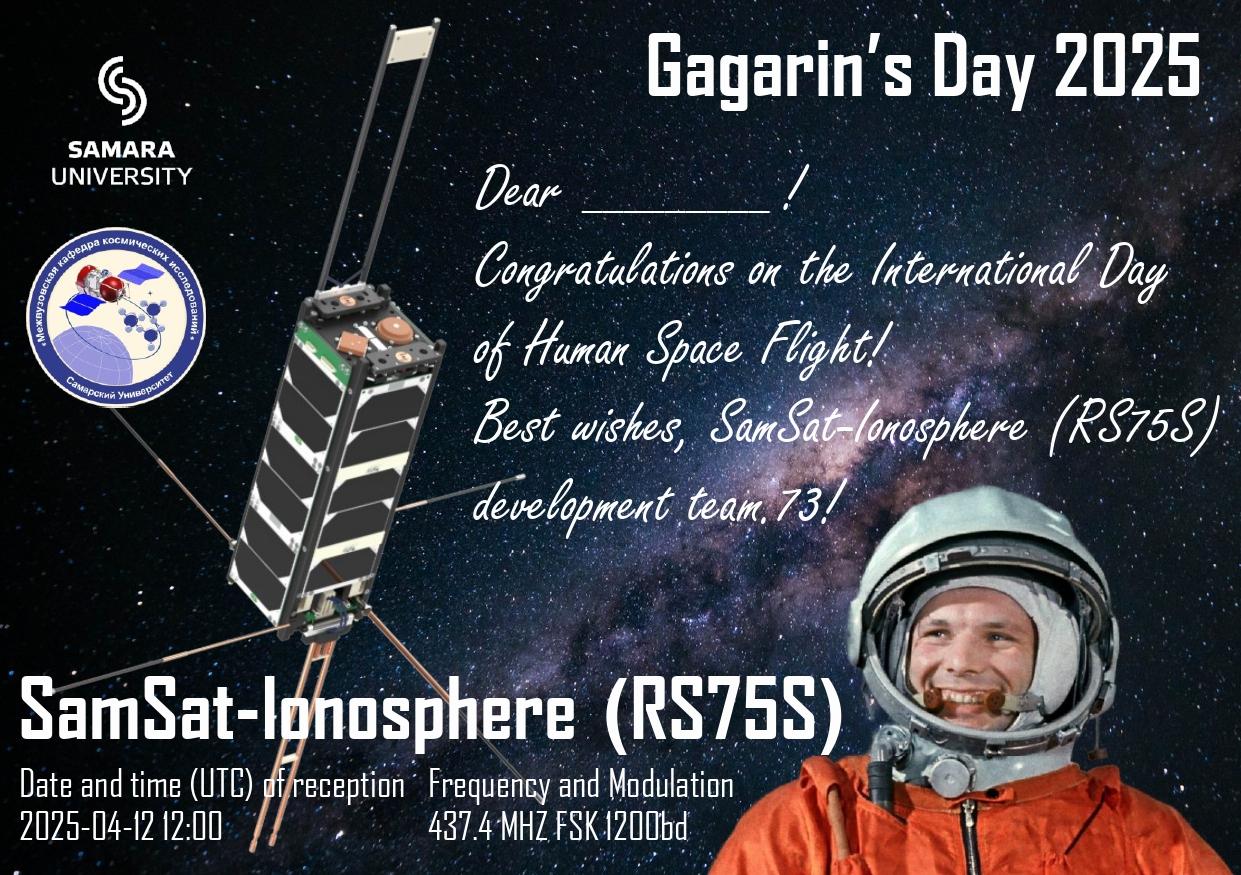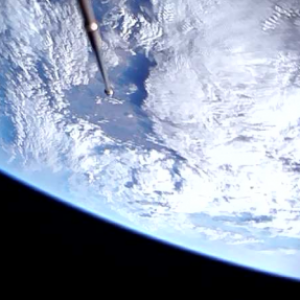Radio amateurs from 13 countries have confirmed the reception of the orbital radio greeting on Cosmonautics Day, which was broadcast on April 7–13 from the Samara scientific and educational nanosatellite "SamSat-Ionosphere". The festive event "Gagarin Day" was organized by Samara University’s Interuniversity Department of Space Research, where this spacecraft was created for assisting scientists in exploring the Earth’s plasma and magnetic shells — the ionosphere and the magnetosphere.

"Radio amateurs and radio observers from worldwide were able to receive and decode the congratulatory message from our nanosatellite. The successful reception of the signal from orbit was confirmed by 27 people from 13 countries, including Russia, Belarus, Georgia, Brazil, Peru, the USA, Italy, Spain, Austria, the Netherlands, Greece, Japan and Czechia. Everyone, who confirmed the signal reception to the University, received our QSL card in the form of the festive personalized postcard with the image of Yury Gagarin and the nanosatellite "SamSat-Ionosphere" in response by e-mail", said Leonid Sinitsyn, Researcher at Samara University’s RL-102.
The nanosatellite "SamSat-Ionosphere" was launched into orbit on November 5, 2024, withing the record-breaking for Russian cosmonautics launch campaign from the cosmodrome "Vostochny". The device was fully designed and manufactured by young scientists and postgraduates of the Interuniversity Department of Space Research and the Research Laboratory "Advanced Fundamental and Applied Space Research Based on Nanosatellites" of Samara University. The device format is a three-unit cubesat, with the dimensions 10x10x30 cm.
Currently, the nanosatellite is operating in its orbit, at the altitude of about 490 km, and continues implementing the research program, transmitting data on the Earth’s magnetosphere and ionosphere. Since November 2024, the Nanosatellite Mission Control Centre of the Interuniversity Department of Space Research has received from the satellite over 14 thousand messages containing scientific and service information. The onboard systems are working normally, unadmonished.
"The measurement data on the Earth’s magnetic field over the territory of Russia are promptly transmitted to Fedorov Institute of Applied Geophysics, and the data on the experimental plasma parameter sensor installed on the satellite are analyzed jointly with the scientists from the Institute of Applied Physics of the Russian Academy of Sciences", noted Leonid Sinitsyn.
In his spare time, "SamSat-Ionosphere" uses a small camera to take satellite images of our planet. We suggest you to evaluate them.
For reference
QSL cards are the name given in the amateur radio environment to special postcards confirming the fact of a radio communication session. The three-letter combination QSL in the international radio code stands for something like "I confirm the reception of your signal". Such cards are used as proof of the achievements of a radio amateur and are the basis for awarding radio amateur diplomas and other prizes. QSL cards to be gained, for example, for a communication session with a distant exotic island or for receiving a signal from an unusual space satellite, are for radio amateurs as important as rare stamps for philatelists.
 RU
RU  EN
EN  CN
CN  ES
ES 